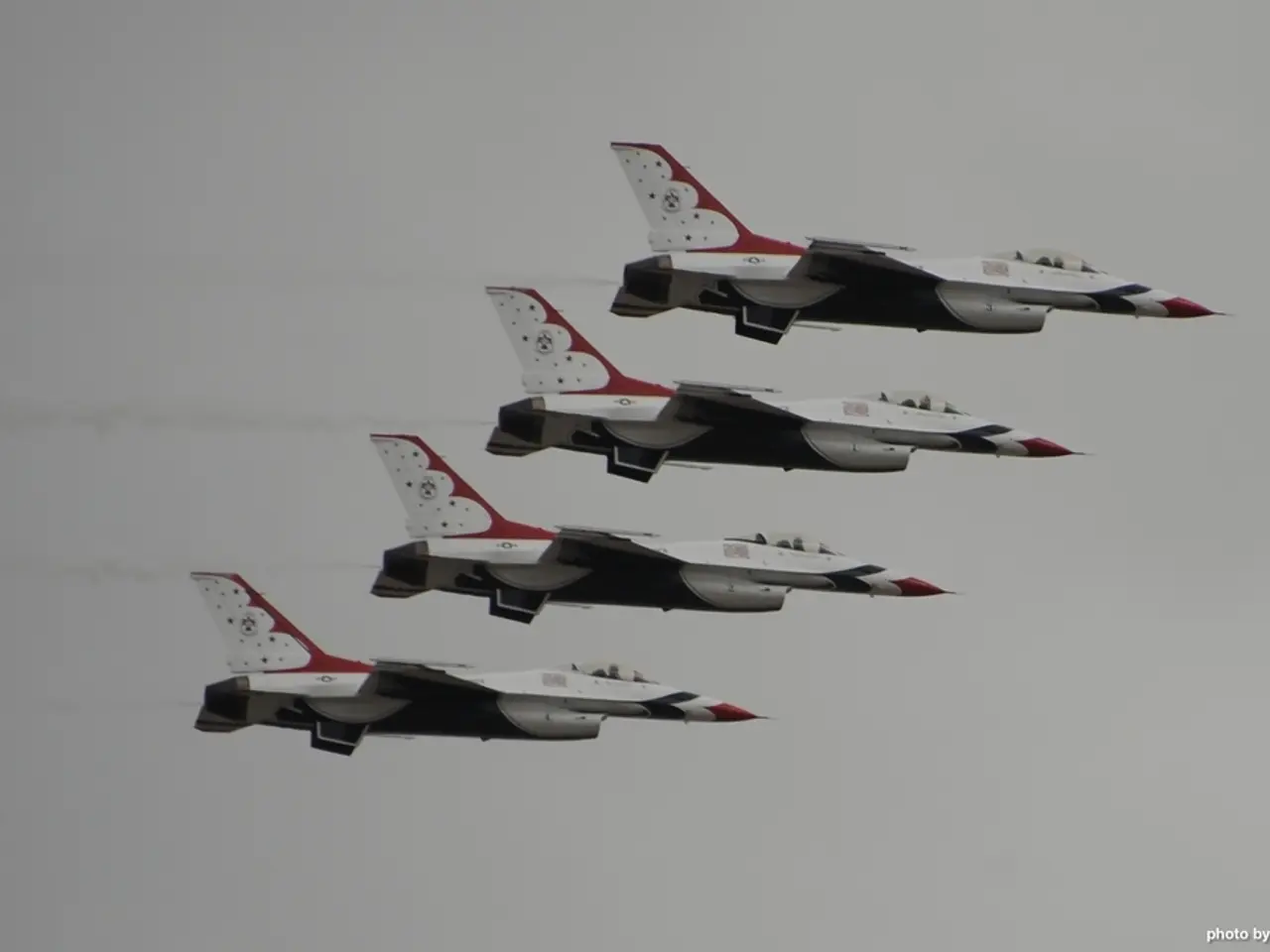Battle for Trump's cutting-edge F-47 aircraft facing setbacks as Boeing laborers initiate a walkout, endangering its timely completion
In an unexpected turn of events, approximately 3,200 Boeing defense unit employees, primarily machinists at facilities in Illinois and Missouri, have commenced a strike, halting the production of various U.S. fighter jets, including the highly anticipated F-47 next-generation fighter jet [2][4][5].
The F-47, designed to replace the aging F-22 fleet, is a strategic aircraft with 185 aircraft planned for production [6]. The strike, which began at midnight on August 4, 2025, threatens to postpone key tasks and potentially necessitate program extensions with the Defense Department [1].
The F-47, announced by President Donald Trump and Defense officials in March, is expected to feature greater stealth, an AI-assisted cockpit outfitted for continuous upgrades, and a command and control node to fly with collaborative combat aircraft or drone swarms [7].
However, the production schedule for the F-47 may be affected by the strike and the engine delay. The advanced engines expected to be used in the F-47 are delayed by another two years, with the updated timeline suggesting they will be ready in the second quarter of FY 2030 [8]. This shift from the initially suggested timeline could cause delays and increased costs in the production of the F-47.
The workers are striking primarily over demands for better pay, benefits, and scheduling. Boeing had offered a 20% wage increase plus bonuses over four years, with the company claiming total incentives equal 40%, but the union members have called this "deceiving" and rejected the deal [3][5].
If the strike continues, there could be federal government intervention to restart production due to national defense concerns, given the strategic importance of the F-47 and other military aircraft [3]. Boeing CEO Kelly Ortberg has downplayed the impact compared to prior larger strikes, stating that the current walkout involves far fewer workers and the company expects to manage through it [2].
Boeing has contingency plans in place, possibly assigning non-union or third-party workers to keep essential tasks moving during the strike. However, the situation remains fluid and could escalate if negotiations stall further [1].
The F-47 is not the only program affected by the strike. The workers also assemble the T-7 trainer and the MQ-25, an aerial refueling unmanned aircraft [4]. The strike last year involving 30,000 workers delayed deliveries of the KC-46 and the P-8 Poseidon aircraft, causing Boeing at least $5.5 billion in lost earnings in the first six weeks [9].
This strike comes at a critical time for Boeing’s defense business, which recently won a $20 billion fighter jet contract and expects defense spending growth [1]. The company's Defense, Space and Security unit has reported nearly $11 billion in losses from late 2021 through the end of last year [9].
References: 1. Boeing Strike: What You Need to Know 2. Boeing Says Strike Involving Fewer Workers Than Last Year's Walkout 3. Boeing Strike: What It Means for the F-47 Program 4. Boeing Strike Affects F-47, T-7, and MQ-25 Production 5. Boeing Strike: Workers Reject Contract Offer 6. F-47: The Next-Generation Fighter Jet 7. F-47: Features and Capabilities 8. F-47 Engine Delay Pushes Timeline to 2030 9. Boeing's Defense Business Suffers Nearly $11 Billion in Losses
- The halted production of the F-47 due to the strike could impact the economy, as delays in the production of military aircraft may affect defense spending and investment in the technology sector.
- The ongoing strike at Boeing's defense unit could also influence politics, as there might be calls for federal intervention to ensure continuity in the production of strategic aircraft like the F-47.
- The labor dispute at Boeing could affect the company's business operations, potentially leading to increased costs and delays in the production of key programs, such as the F-47, T-7, and MQ-25.
- The prolonged strike, if unresolved, could impact the general news narrative, as discussions around national defense, employment, and corporate finance may dominate headlines, particularly in the sports section due to the strategic importance of the F-47 program.




